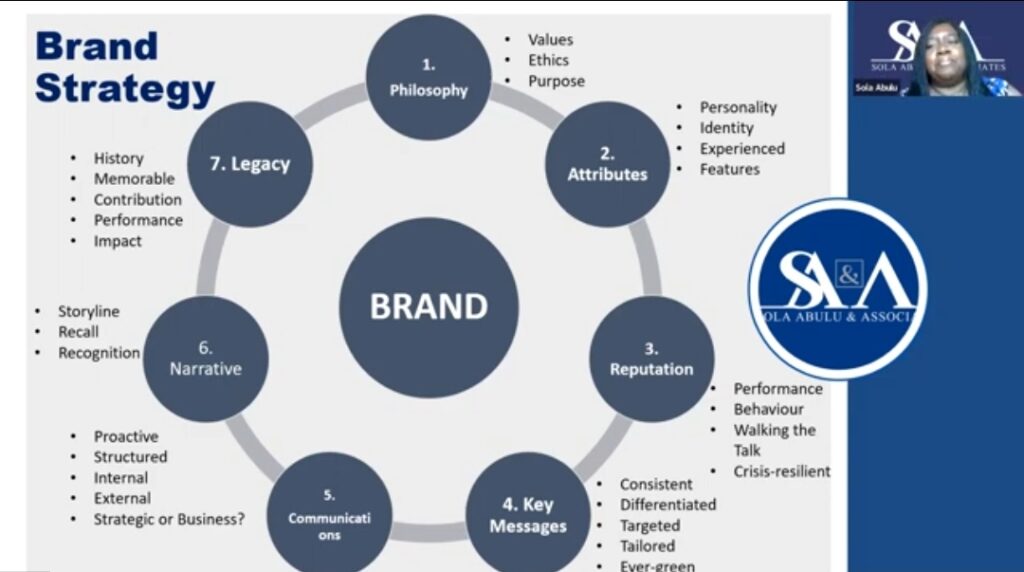What is a brand strategy?

Most organizations that deal less with consumers in their daily operations tend to pay less attention to having a brand strategy because of the unwise assumption that their work will always speak for them. A brand strategy is relevant for all sectors including the commercial and non-profit environments because it entails how a brand is built and nurtured on its core attribute.
A brand encapsulates the estimate of value that the market places on a business, organization and an individual. How do people perceive the organization, how is the product marketing received and do people identify you as credible? The answers to these questions explain whether you have an effective brand strategy. This explains why it should be proactively preserved because when businesses need to prove their credibility for investment purposes, reputation management and crisis management, they rely on an already built and effective strategy.
In making important decisions or attracting a particular stakeholder group, a rich brand portfolio and top-of-the-mind presence in the market speaks volume to investors who always seek for the word on the streets around a business or entity. A brand strategy helps communicate the message and essence of a brand in a way that end-users and the target audience understand and resonate with. Here is an insightful video on Understanding Brand Strategy.
Some key elements of a brand strategy.
The principles of a brand strategy are the same for all brands whether established locally or internationally but the difference is in the application to their different context. What makes an international brand’s strategy effective is not different from that of a local brand. For companies and individuals interested in developing a brand, it is important to look out for the following:
- Brand philosophy: There should be a philosophy for any brand that explains the values, ethics and purpose of the brand. The way communicators project their brands and how employees work should show what the brand stands for. This means that communicators must be able to tell the story of their philosophy in a way that the market understands and agrees to.
- Brand Attributes: This has to do with the personality of the brand, identity, experience of users and features. For a brand personality, you can be formal, informal or controversial. Do people see your brand as intellectual, of or relating to consulting and operational excellence? Also, what experience do people have when engaging your brand and how is the experience transmitted in the resources and investments you make for the company? With regards to your brand features, you should pay attention to how you relate with third-party brands.
- Reputation: Reputation has to do with performance and behaviour. This is achieved by doing the right thing and working very closely on your reason for being. Keeping a brand reputation in check will require that you walk the talk and be crisis-resilient. In today’s digital business world, spinning is a very ineffective way of building a brand reputation because you cannot determine how the message is received but you can determine your performance that speaks volumes. When managing a reputation, verifiable facts stand the test of time and both positive and negative issues become a part of the brand story.
- Key messages: Every organization should have a consistent messaging that they share across platforms. This gives direction to what people can say about the brand. This emphasizes why a brand must push its narrative to be in sync with the brand philosophy and attributes. Start with a foundation message that tells who you are, your vision, mission and contribution to society. A key message is an evergreen message because who you are and your vision does not change but can be targeted, differentiated and tailored for different audiences.
- Communications: Communications should be strategic and proactive in order to build a shared vision. This means there should be a plan for communications whether internally or externally to ensure that the brand communications flow in an impact-driven manner to the target audience. You will find our previous article on strategic communications and developing a communications plan
- Narrative: Without a narrative, the brand can be anything people describe it to be. Spelling out your history and storyline is required to build a brand that can be recalled and recognized.
- Legacy: Every brand building what will outlive the present should think about how it wants to be remembered. This means you will pay attention to your contributions, performance, social impact and governance over time
When a brand does not clearly define its philosophy and attributes, it creates an atmosphere for anything to be accepted and can never attract the right audience. In employing talents, for instance, a company that seeks to attract the best hands intentionally communicates its philosophies and attributes to the public and models them in its behaviour.
